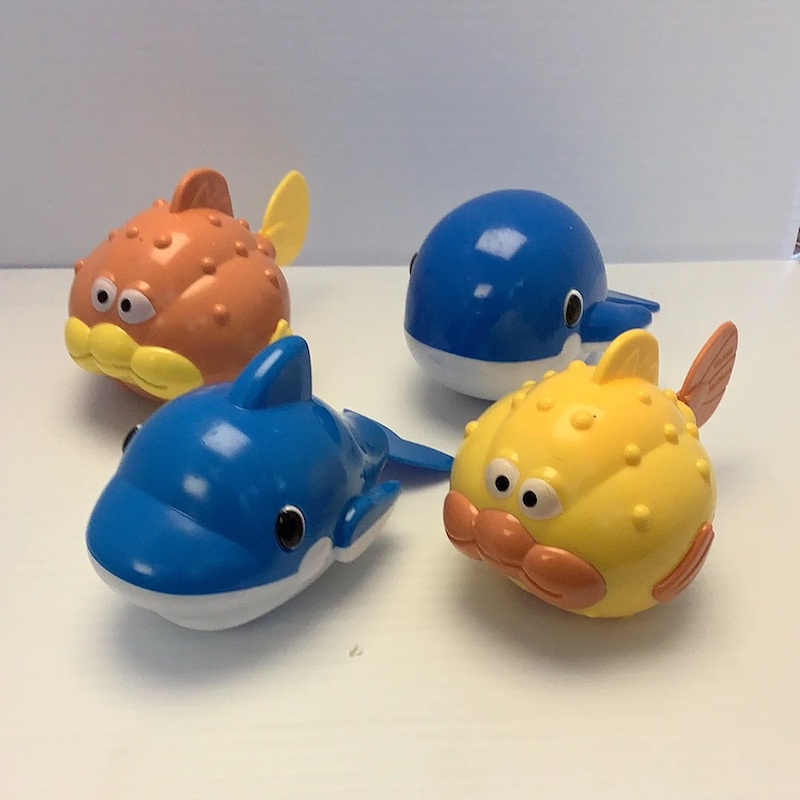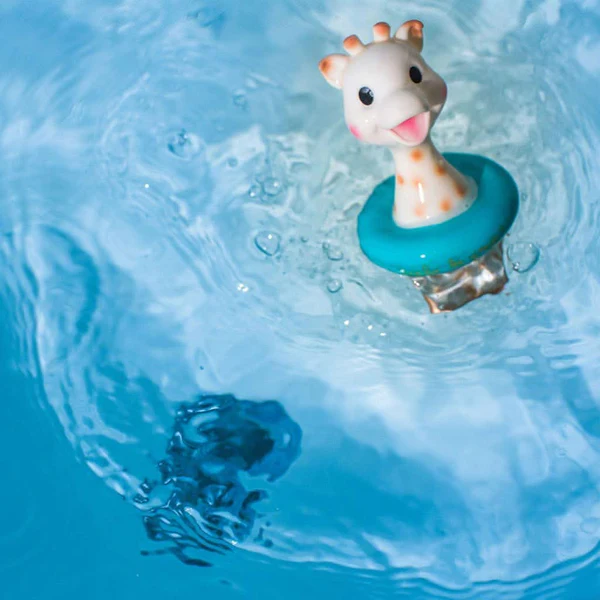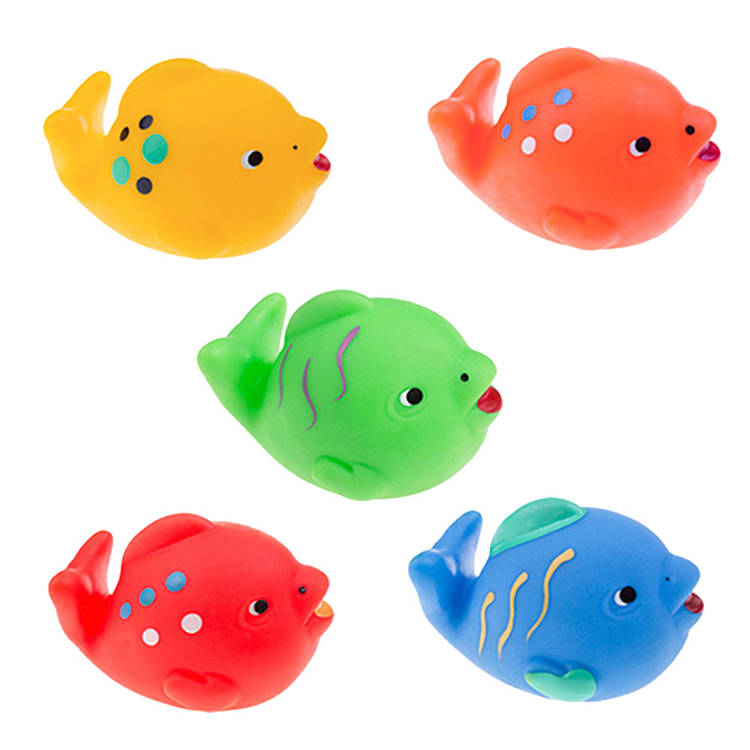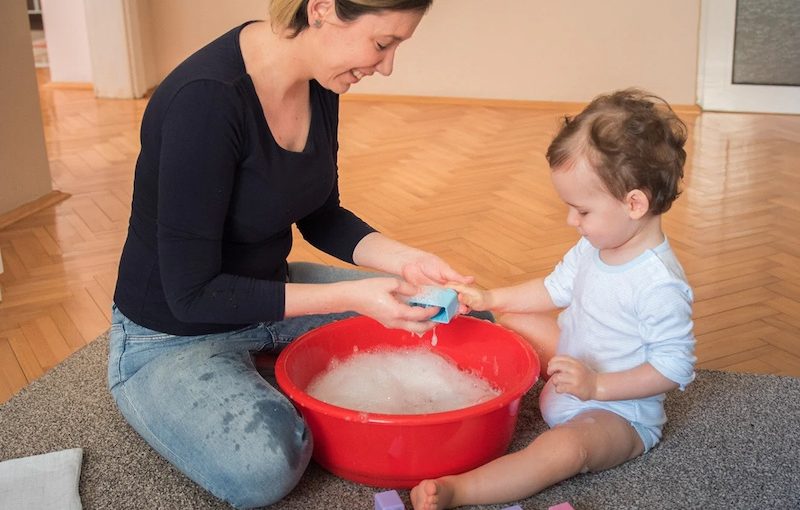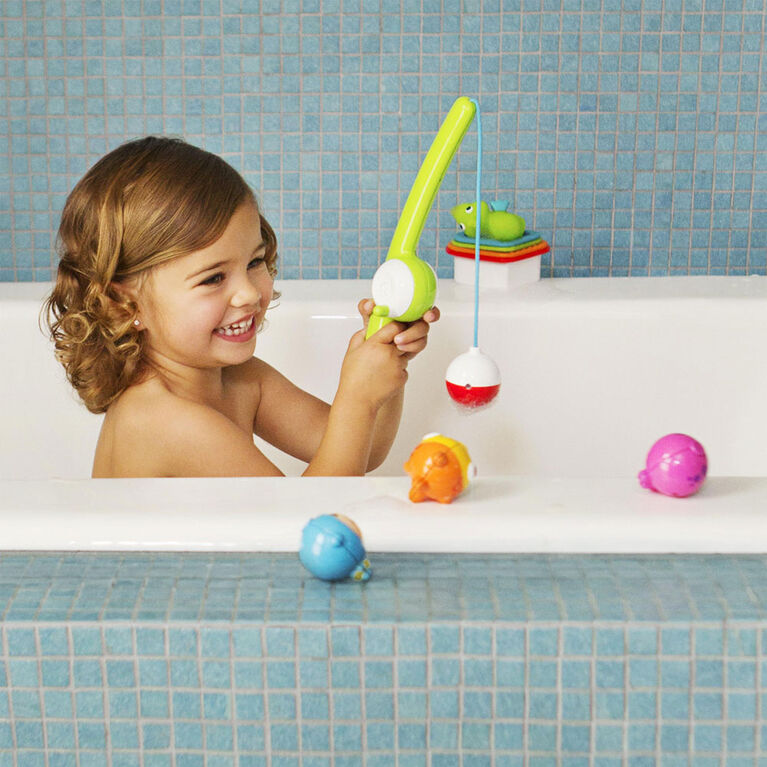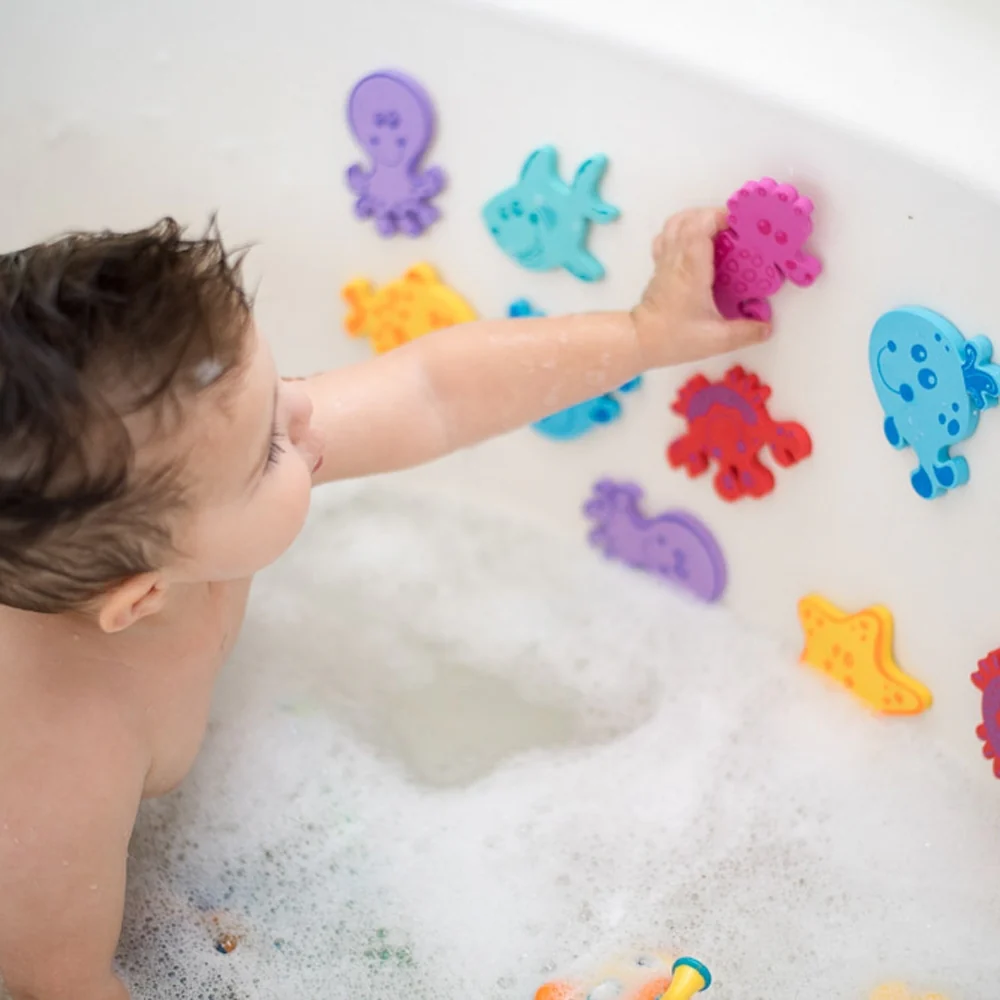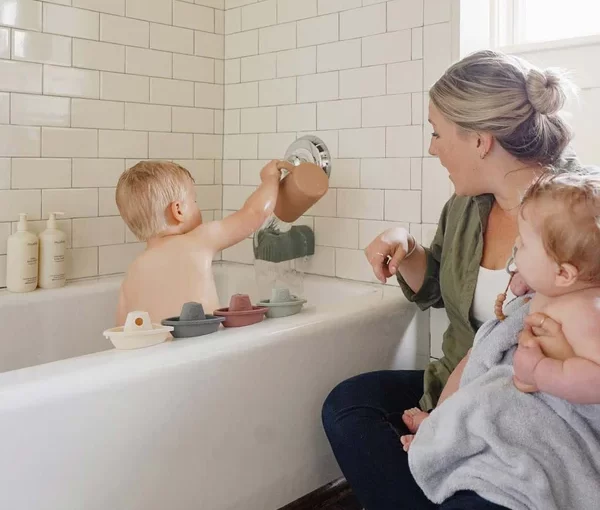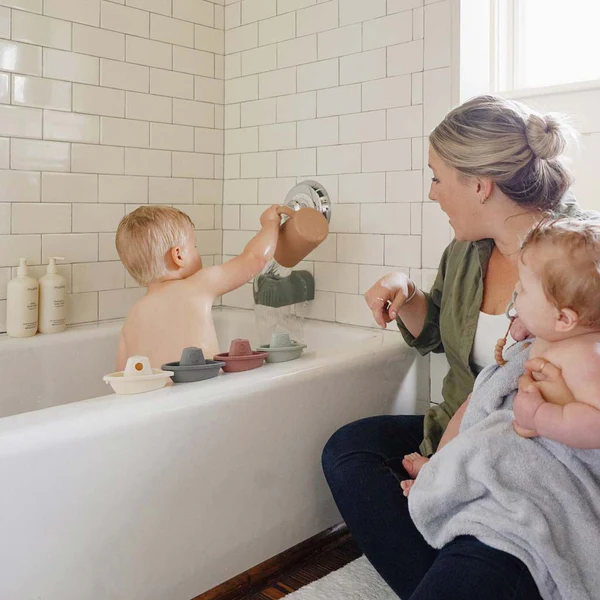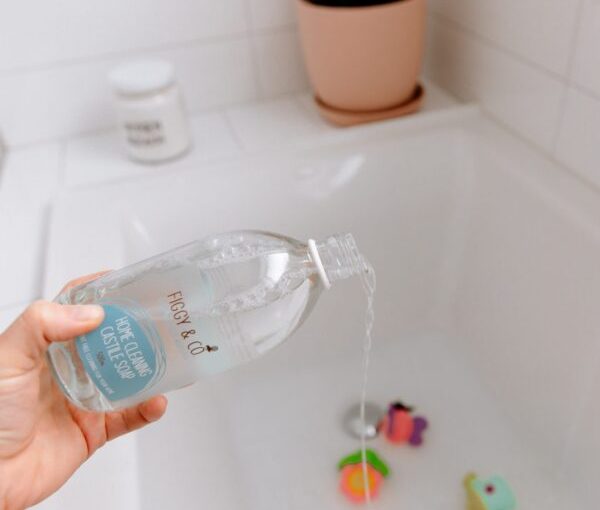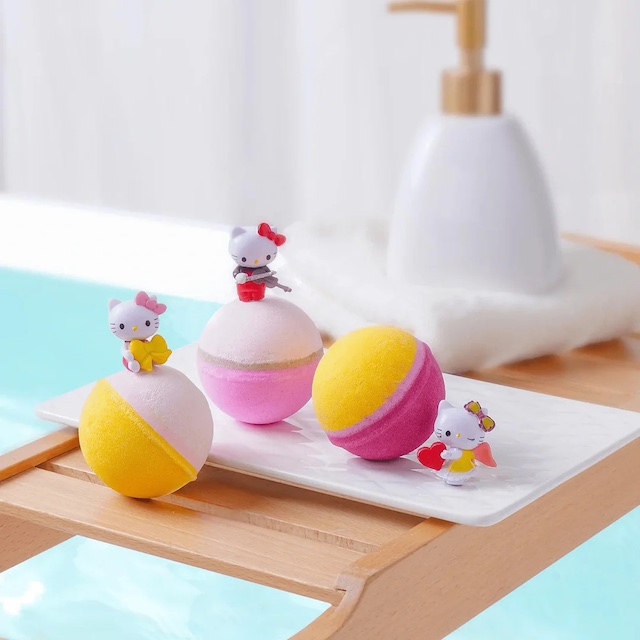The Dangers of Bath Toys with Holes
The joy of bath time often includes playful toys. However, bath toys with holes pose significant risks. These toys can retain water, creating a perfect breeding ground for mould and bacteria. Children, curious by nature, may squeeze the toys and spray mould-infected water, potentially ingesting harmful microorganisms. This can lead to infections, allergies, and other health issues. Over time, bath toys with holes can develop unsightly black mould, which is difficult to clean and may require disposing of the toy altogether. Parents should be aware of these dangers and consider bath toys without holes as a cleaner, safer alternative for their children’s playtime.
Advantages of Bath Toys Without Holes
Switching to bath toys without holes has multiple benefits for both kids and parents. Here are some of the key advantages:
- Hygiene: Without the nooks and crannies that come with holes, these toys keep water out. This cuts the risk of mould and mildew growth. Kids play in a cleaner environment.
- Safety: With no hidden mould, the risk of your child ingesting or inhaling harmful bacteria is vastly reduced. This keeps their sensitive systems protected.
- Durability: Toys without holes are less likely to trap soap scum and debris. They stay in good condition longer, which means you spend less on replacements.
- Ease of Cleaning: Simple designs make these toys easy to wipe down. Parents save time and ensure the toys are ready for the next fun bath time.
- Environmentally Friendly: These durable toys do not need frequent replacement, reducing waste. This makes them a more eco-friendly choice for environmentally conscious families.
Investing in bath toys without holes gives you peace of mind while your children enjoy their splashy playtime.
Top Picks for Non-Holed Bath Toys
Choosing the right bath toys without holes is essential for your child’s health and safety. To help parents make an informed decision, we’ve curated a list of top picks that are widely recognized for their quality and safety standards. Keep in mind that our recommendations focus on the features that prevent water retention, making them less prone to mould growth.
- Silicone Rubber Ducks: A timeless favorite, these rubber ducks have no holes, are easy to clean, and float perfectly on the water.
- Plastic Boats and Ships: Made with solid plastic, these toys glide on the surface without taking in water. They come in vibrant designs that spark creativity.
- Foam Letters and Numbers: These educational bath toys stick to the sides of the tub when wet. They are compact, with no holes, and double as a fun learning tool.
- Soft, Squeezable Animals: Opt for soft toys made from solid materials. They provide safe squeezing fun without trapping water inside.
- Stacking Cups: Although they have no small holes, their open-top design lets water pour out easily. These are great for developing motor skills.
When bringing these non-holed bath toys into your home, you ensure cleanliness and longer-lasting play items for your children. Each toy is designed to be low maintenance and durable, aligning with the benefits highlighted earlier in this blog. Keep these top picks in mind to enhance your child’s bath time while upholding the highest safety standards.
Essential Tips for Bath Toy Maintenance
Maintaining bath toys without holes helps ensure they remain clean, safe, and durable. Just owning these toys is not enough. Regular care is vital. Here are some essential tips to follow:
- Dry After Each Use: After bath time, rinse the toys with fresh water. Remove any soap residue. Let them air dry fully before storing them.
- Regular Cleaning Schedule: Even without holes, toys can get dirty. Set a cleaning routine. Use warm soapy water for a weekly wash.
- Avoid Harsh Chemicals: Stick to mild soaps for cleaning. Harsh chemicals may harm the toys or irritate a child’s sensitive skin.
- Proper Storage: Store toys in a dry area. Use a net or basket to keep them ventilated. This prevents mildew.
- Inspect Toys Regularly: Check for signs of wear or damage. Replace any toys that seem unsafe or overly worn.
- Boil for Sterilization: For a deep clean, boil the toys regularly. Just ensure the material can withstand high temperatures.
By following these tips, you can prolong the life of your child’s bath toys without holes. You support a hygienic play environment, keeping your child safe during bath time fun.
What Makes Bath Toys Without Holes Unique
Bath toys without holes set themselves apart in many ways. Their unique design leads to a myriad of benefits that ensure safety, cleanliness, and durability. Unlike their perforated counterparts, these toys don’t allow water to seep in, eliminating the possibility of harmful mould and bacteria breeding. Here’s what makes them special:
- No Water Retention: These toys keep the interior dry, this means no mould or mildew inside.
- Simple Structure: The solid build of these toys makes them less likely to break and easier to clean. Their uniform surfaces have no hidden spots for germs to hide.
- Child-Friendly: Without small parts or openings, these toys are safer for little ones. They can’t suck in or spray out dirty water during bath time.
- Innovative Design: Many of these toys are created with imaginative shapes and colors, but keep safety and hygiene in the forefront. Creators are thoughtful about nooks and crannies and avoid them.
- Long-Lasting Use: Durability is a hallmark of non-holed bath toys. They are built to withstand vigorous play without compromising their structure or cleanliness.
In summary, bath toys without holes offer a unique combination of hygiene, safety, and durability. This makes them an ideal choice for parents who prioritize their child’s health and the longevity of their toys. They stand out not just for what is seen, but for what isn’t there—the holes, which can be a haven for dirt and disease.
How to Choose Safe and Durable Bath Toys
Selecting the right bath toys for your child involves considering both safety and longevity. Here’s a concise guide to ensuring you choose toys that will keep bath time both fun and safe for your little ones.
- Material Matters: Look for toys made from high-quality materials like silicone or BPA-free plastic. These are not only gentle on your child’s skin but also stand up to frequent use.
- Check for Certifications: Toys with safety certifications have passed rigorous testing. Look out for marks or labels indicating compliance with safety standards.
- Simple Designs: Choose toys with straightforward, solid designs. They are likely to last longer and are easier for kids to hold and play with.
- Avoid Small Parts: Steer clear of toys with detachable pieces that could pose a choking hazard. Smaller components can also be harder to clean.
- Test for Strength: Give toys a gentle squeeze or tug to check they won’t tear or break easily. Durable toys will withstand the energy of playful tots.
- Read Reviews: Leverage the experiences of other parents. Online reviews can offer valuable insights into a toy’s durability and safety.
Remember, investing a bit more in quality bath toys without holes can save you money and worry in the long run. Your child’s safety during their splashy escapades is paramount, so taking the time to select carefully will ensure endless and carefree bath time enjoyment.
Innovative Materials for Mould-Free Bath Toys
In the quest for mould-free bath time fun, innovative materials play a key role. Manufacturers are consistently exploring options that prevent mould growth while remaining safe and enjoyable for children. Let’s delve into some materials that are revolutionizing the world of bath toys without holes:
- Silicone: This flexible, rubber-like material is non-porous and resists water absorption. Silicone bath toys are easy to clean and dry, greatly reducing mould concerns.
- Natural Rubber: Harvested from rubber trees, this material is biodegradable and often free from harmful chemicals. Natural rubber toys are soft yet durable, perfect for bath time.
- Polyethylene: Being a type of plastic that doesn’t require plasticizers, it’s often used for its mould-resistant properties. Toys made from polyethylene are tough and can endure lots of play.
- Foam: Closed-cell foam toys do not soak up water, which hinders mould growth. Plus, they’re lightweight and soft to the touch.
- Wooden Toys Coated with Safe Sealants: Wood is not inherently mould-free, but when coated with water-resistant, non-toxic sealants, it can be ideal for bath toys.
Prioritizing materials such as these when selecting bath toys without holes not only promotes a mould-free environment but also ensures the longevity and safety of the toys. Parents can rest assured that with these innovative materials, their children can enjoy a hygienic and playful bath time experience.
The Importance of Non-Toxic Bath Toys for Children’s Health
Ensuring the toys your children play with during bath time are non-toxic is crucial. Children tend to be curious, often putting toys in their mouths. Therefore, it’s essential to have bath toys without holes that are also made from safe, non-toxic materials. Here is why non-toxic bath toys are important for your child’s health:
- Prevent Chemical Exposure: Non-toxic toys reduce the risk of your children being exposed to harmful chemicals. Kids’ skin is sensitive and can absorb toxins.
- Avoid Allergies and Irritations: Some children are allergic to certain types of plasticizers and other chemical compounds found in less safe toys. Non-toxic materials minimize these risks.
- Ensure Safer Teething: For very young children, chewable toys that are safe and free of toxins can serve as teething aids without health worries.
- Promote Overall Health: Chemicals found in some toys could impact your child’s overall health, including hormonal development and immune system function. It is best to opt for toys that have no such associated risks.
- Support Healthy Development: Children’s bodies are growing and developing rapidly. Non-toxic toys support a healthier development process, free from interference from hazardous substances.
As a parent, choosing bath toys without holes that are also non-toxic is a proactive step towards safeguarding your child’s health. Always check for product labels that indicate the absence of BPA, phthalates, and other harmful chemicals. Brands that are transparent about their materials tend to be a safer choice. Remember, a little extra care in the selection of your child’s bath toys can make all the difference for their health and well-being.

